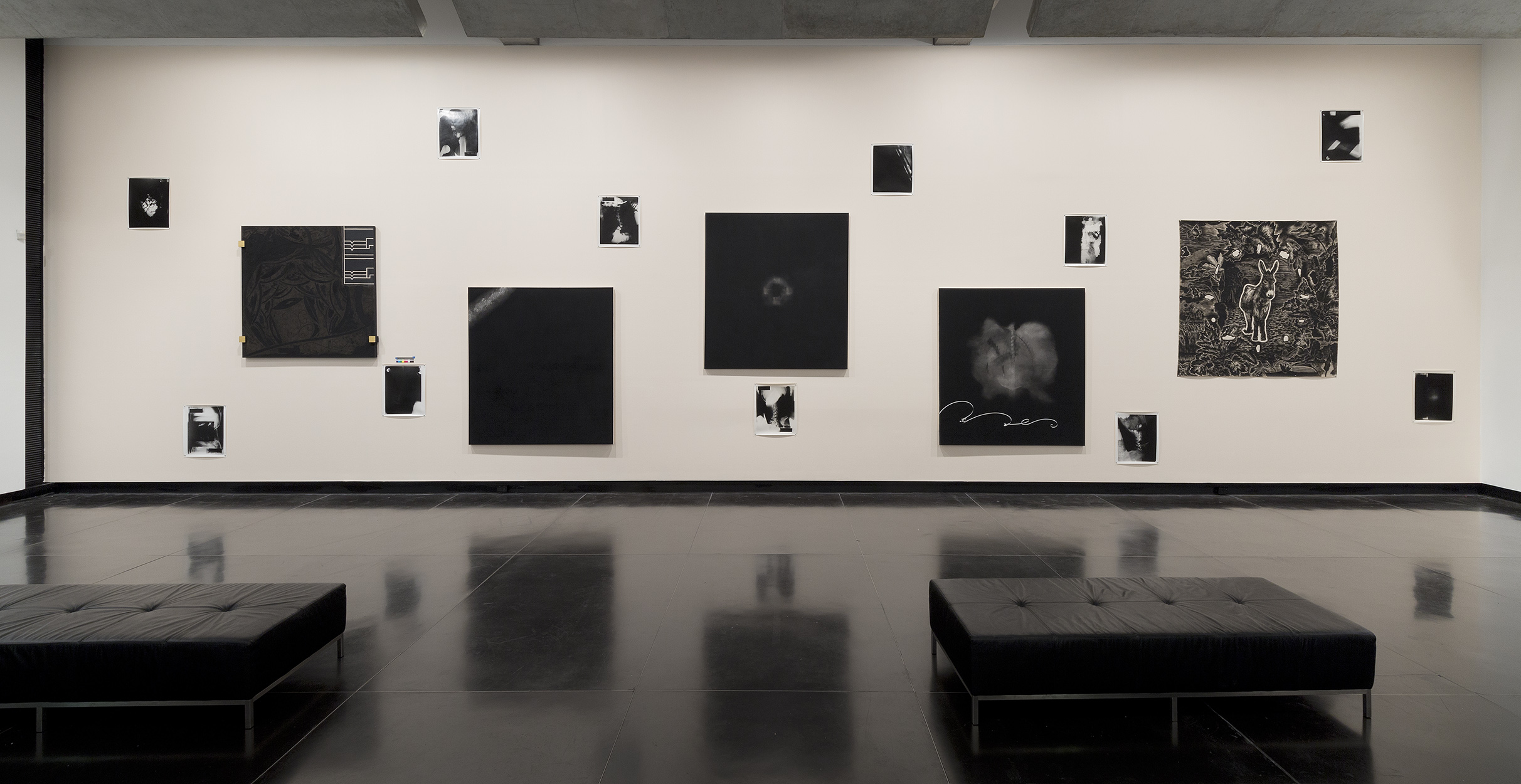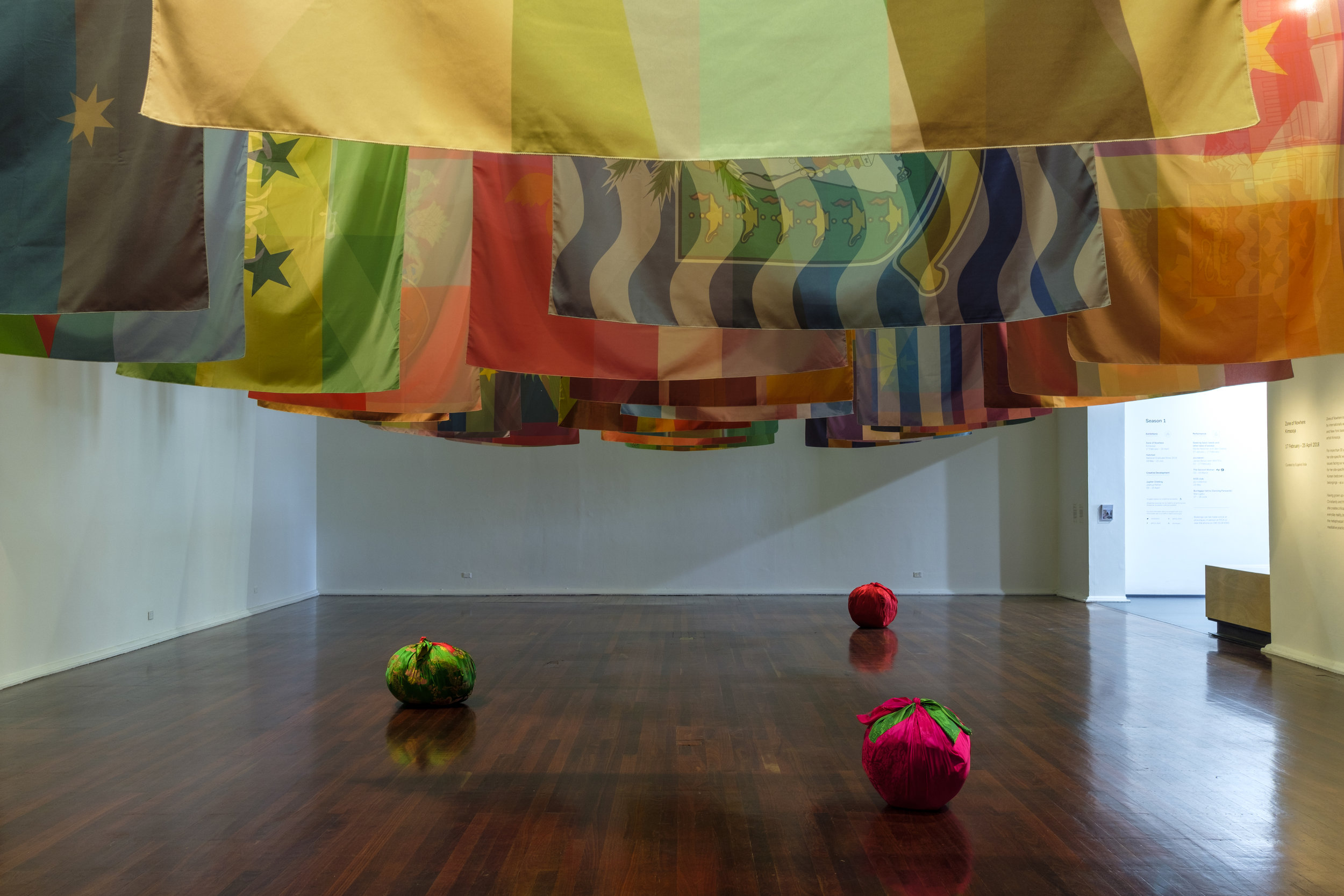The worlds of art fairs and triennials don’t often blur, each preferring to assert their individual autonomy not unlike church and state. Indonesian artist Uji Handoko Eko Saputro (a.k.a. Hahan), however, revels in disrupting such dichotomies. At Art Central Hong Kong in March 2017, the artist’s Speculative Entertainment No. 1 deliciously disorientated fair-goers with a huge mural painting literally carved up like pieces of cake into 10-centimetre portions – and ‘served’ up by a costumed cast of assistants replete with loud speakers.
For the ‘NGV Triennial’ (where he is one of over 100 participating artists, at the NGV International until 15 April), Hahan is presenting that performative work’s sculptural precursor, Young speculative wanderers (2014–15). At first glance, with its nine superhero-style polyester-resin figures holding aloft three paintings within a darkened disco-like setting, it seems perfectly Instagram-friendly fodder. But spending time with the installation, and with the artist himself, the work opens up to inhabit a more interesting and speculative twilight zone. This isn’t a typical work of the grab-and-plonk variety, but one borne of a particular cultural context and made more meaningful because of its sensitivity to site.
Hahan is one of the most notable avatars of the thriving Yogyakarta art scene, which in the past few decades has unleashed a remarkably generous and fertile spirit of collaboration across international networks. In 2005, for instance, Hahan helped form the band Punkasila with Melbourne artist Danius Kesminas and, in many ways, Young speculative wanderers documents this personal and collective journey.
Framed by the celebratory floral garlands of Javanese culture, the trio of Indo-pop paintings witnesses a generative spirit in full flux, from an individual gesture at first to a market-driven international discourse in its ascendant phase. In the final frame, Roy Grounds’s NGV building appears as a shrine-like nirvana to be climbed, with both affection and irony – ‘a celebration of the rise of a new breed of Indonesian visual artists,’ Hahan says.
This isn’t the journey of an individual artistic ego forged in western-style isolation. Instead, the nine sculpted figures represent Hahan’s sundry collaborators and enablers – curators, collectors, fellow artists. ‘If you are an artist in Indonesia, you have to acknowledge that you are supported by so many different layers of informal and official infrastructures,’ he says.
And contextualising the installation, grounding it in a particular locality, are the floors and walls of traditional azulejo tiling (a legacy of European colonialism in Indonesia) – in this case patterned by the place-marking symbol of Google Maps. So in this era of increased artistic mobility are we here or there? In Melbourne or Yogyakarta? Or in a new non-place of our own collective devising, with artist and audience as one? This is but an intriguing stepping-off point in Hahan’s work which – like the ‘NGV Triennial’ itself – offers welcome room for speculation.
Michael Fitzgerald, Melbourne






































